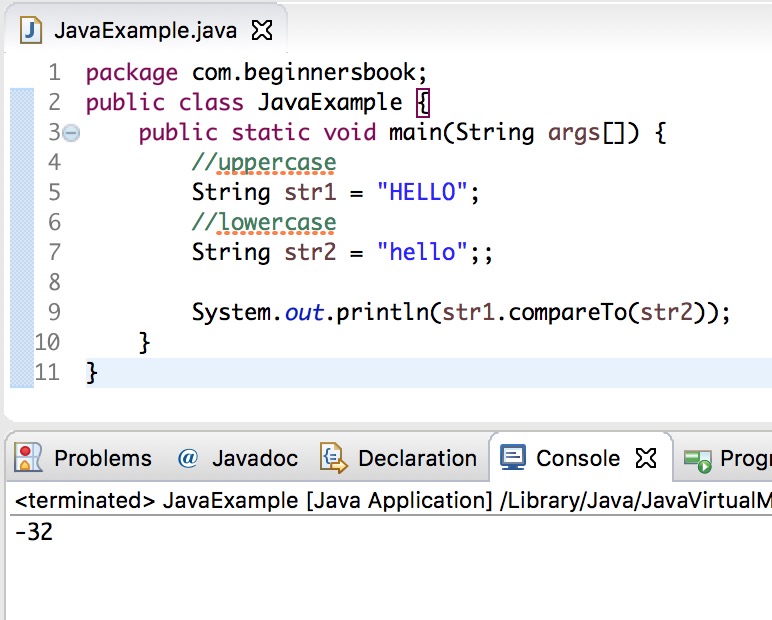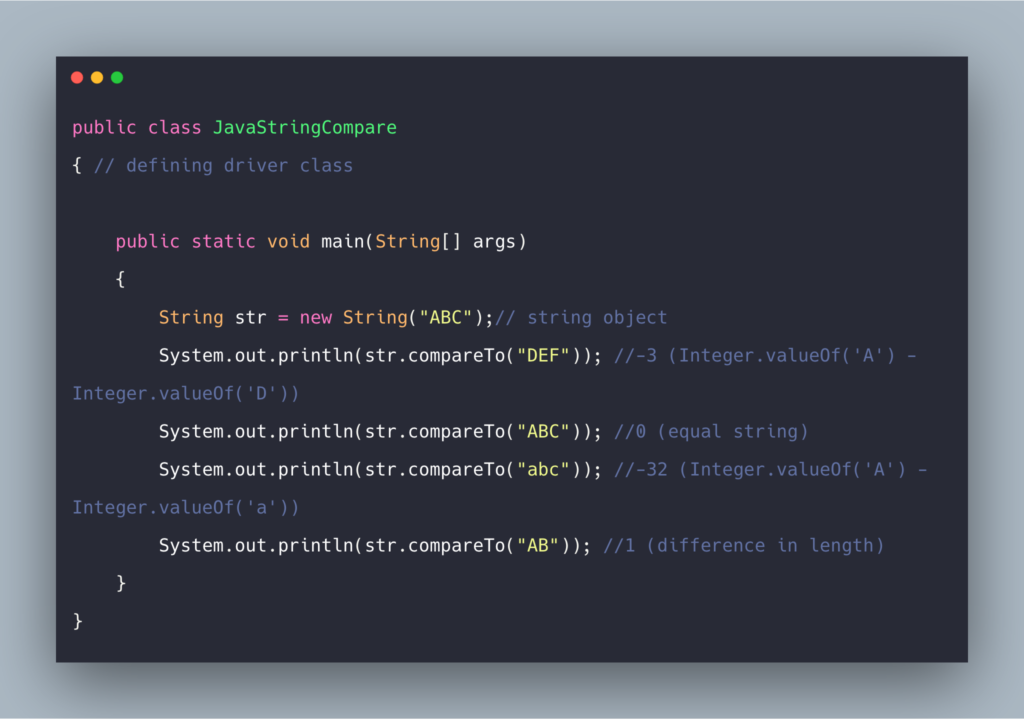

NullPointerException – If the object passed to this method is not compatible with this object.Ĭlasses that implement Comparable interface have their natural ordering specified with them, and so they can be sorted directly in Collection or Arrays using Collections.sort() and Arrays.sort().The strings are sorted in the tree set using the compareTo method in the. ClasscastException – If the object passed to this method is null To tell the differences between Collection and Map and describe when and how to.If the first string is lexicographically greater than the second string, it returns a positive. It compares strings on the basis of the Unicode value of each character in the strings. It returns a positive number, negative number, or 0.

It returns a positive integer if this object is greater than the specified object. The Java String class compareTo () method compares the given string with the current string lexicographically. It returns a negative integer if this object is less than the object specified. Public static void main(String.CompareTo method returns 0 if the object specified and this object is equal. In the example below, we use TreeMap to sort keys into a Map. The Java API includes many classes to assist with sorting, including TreeMap. Just keep in mind that a ClassCastException will be thrown for any sorted object that doesn’t implement the Comparable interface. This log may be confusing, but don’t worry. Returns zero if this object is equal to the specified other object, a negative number if its less. (actual and formal argument lists differ in length)) Compares this object with the specified object for order. (inference variable T has incompatible boundsĮquality constraints: .Simpson charCodeAt (JavaScript) Gets the character at a specified index as an integer code. charAt (JavaScript) Gets the character at a specified index. String (String - JavaScript) Creates a new String object.

If you run this as a test, you will see something like the following output:Įrror:(16, 20) java: no suitable method found for sort() RegExp (Standard - JavaScript) String (Standard - JavaScript) Represents a string. If the Simpson object wasn’t implementing Comparable, a ClassCastException would be thrown. You can run your own tests while you follow the examples. Keep in mind that custom objects must implement Comparable in order to be sorted, even as an array. In the second sort() invocation, it is sorted to: In the first sort() invocation, the array is sorted to: This.name = int compareTo(Simpson simpson) Īrrays.stream(simpsons).forEach(System.out::println) In this first example, we implement the Comparable interface in the Simpson class, using Simpson in the generic type: Sorting a Java List with a custom objectįor our example we’ll use the same POJO we’ve used for other Java Challengers so far.
#Compareto method map java how to
Whatever we want to do, we just need to know how to implement the correct sort logic for the given interface and type.

The Comparator interface allows us to do the same but in a more flexible way. This interface is found in java.lang package and contains only one method. This method returns the value 0 if this Integer is equal to the argument Integer, a. Java Comparable interface is used to order the objects of the user-defined class. Using the Comparable interface and compareTo() method, we can sort using alphabetical order, String length, reverse alphabetical order, or numbers. compareTo() method compares two Integer objects numerically. In Java, we can implement whatever sorting algorithm we want with any type. Programmers frequently need to sort elements from a database into a collection, array, or map.


 0 kommentar(er)
0 kommentar(er)
